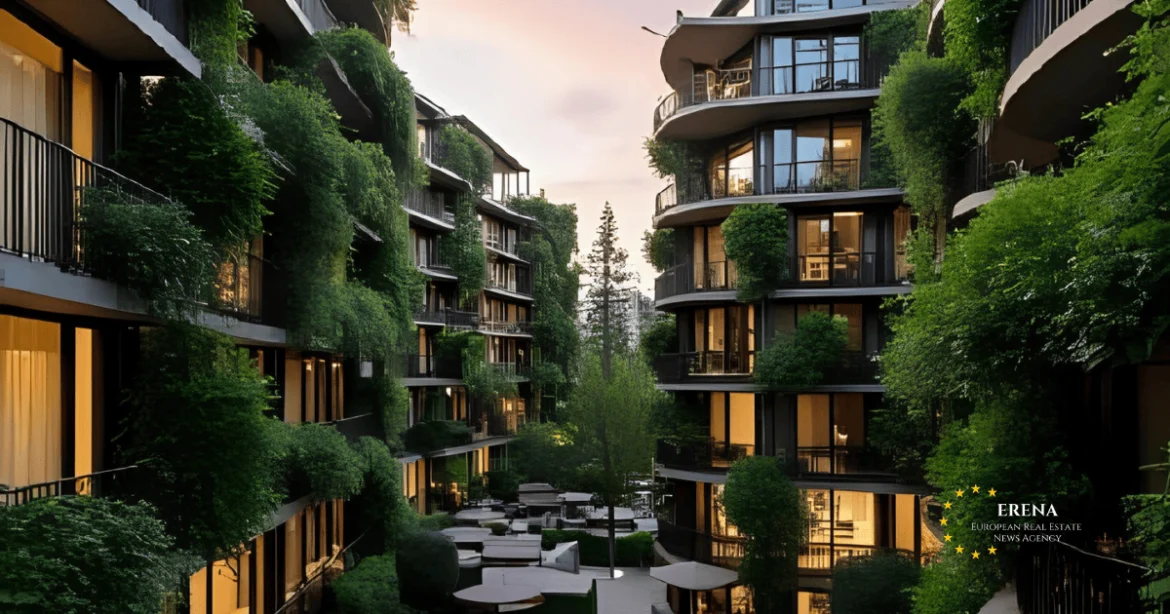Bosco Verticale in Milan is more than an architectural landmark — it is a vertical forest that has reshaped the idea of living in dense cities. Completed in 2014 in the Porta Nuova district and designed by Boeri Studio (Stefano Boeri, Gianandrea Barreca, Giovanni La Varra), the project consists of two residential towers standing 110 and 76 meters high. Unlike traditional skyscrapers of glass and steel, their façades are layered with vegetation: about 730 trees, 5,000 shrubs, and 11,000 perennials. In total, the planting mass is equivalent to a hectare of woodland, concentrated into two high-rise buildings in the heart of Milan. This bold idea demonstrates how architecture can merge with nature to provide both ecological and social value.
“Architecture must merge with nature, not fight it.” — Stefano Boeri
A Vertical Forest in the City Center
Each balcony extends more than three meters to host planters capable of sustaining trees up to nine meters tall. More than 90 species were selected to create a dynamic, seasonal landscape that changes colors throughout the year. The combination of deciduous and evergreen species ensures shade in summer, sun exposure in winter, and a continuous green presence. This design forms a microclimate: vegetation filters dust, traps carbon dioxide, and releases oxygen, while also reducing wind pressure and acting as a natural noise barrier. Studies confirm that the façades lower indoor temperatures in summer, decreasing the need for air conditioning, and help reduce heating demand in cooler months.
An Urban Ecosystem in the Sky
Bosco Verticale is not only about plants but also about biodiversity. Within its first year, researchers recorded more than 1,600 birds and insects inhabiting the towers. Falcons, bats, and a variety of butterflies have been spotted, turning the skyscrapers into ecological islands in the middle of Milan’s dense urban grid. For residents, this creates an unusual experience: waking up to birdsong or watching seasonal changes unfold outside their windows.
“A new urban ecosystem has emerged in the sky.” — ArchDaily
Advanced Engineering and Water Management
The project demanded a new level of engineering to make a forest grow vertically. The cantilevered balconies, each weighing several tons, were tested to withstand wind loads acting on tree crowns. Planters are built with waterproof layers, anti-root barriers, and lightweight volcanic substrates that provide both stability and drainage. A sophisticated drip-irrigation system delivers water directly to each plant, partly recycled from greywater and supported by underground cisterns. This ensures sustainability and reduces waste. Heat pumps and renewable energy integration also help reduce the overall energy footprint, making Bosco Verticale both a climate regulator and a model of resource efficiency.
Recognition and Worldwide Impact
Since its opening, Bosco Verticale has received international recognition. In 2014, it won the International Highrise Award, and in 2015 it was named the “Best Tall Building Worldwide” by the Council on Tall Buildings and Urban Habitat.
“Bosco Verticale proves that architecture can coexist with nature.” — CTBUH Jury, 2015
The project has inspired similar developments around the globe. Vertical forests are being designed in cities like Lausanne, Utrecht, Eindhoven, and Nanjing. Boeri has also proposed entire “forest cities” in China and Mexico, where neighborhoods would be covered in vegetation to combat pollution and provide healthier living environments. The Milan towers remain the original prototype that sparked this global movement.
Luxury Meets Sustainability
Although designed with ecological goals in mind, Bosco Verticale has also become one of Milan’s most prestigious addresses. As of 2025, apartments typically sell for €12,000–15,000 per square meter, with an average of around €15,600/m². Smaller units of around 80 square meters are priced near €1.3 million, while penthouses of 250 square meters or more can exceed €5 million. Some exclusive listings reach even higher: a penthouse has been offered for about €15 million, underlining its status as one of the most luxurious residences in the city. International buyers see the towers not just as property but as a symbol of sustainable prestige.
Daily Life Among the Trees
Residents describe life inside Bosco Verticale as unique. Balconies function as private gardens, offering space for morning coffee surrounded by greenery or for children to play in natural shade. Seasonal changes bring vibrant blossoms in spring, dense shade in summer, golden leaves in autumn, and sculptural branches in winter. Research on biophilic design highlights psychological benefits: reduced stress, improved mood, and a stronger sense of well-being.
“Living here feels like escaping the city without leaving it.” — Resident interview, 2024
A Prototype for the Future
Stefano Boeri describes Bosco Verticale as:
“A house for trees inhabited by humans.” — Stefano Boeri
It is a prototype for a new type of urban architecture where buildings are no longer isolated from nature but function as part of it. The Milan towers demonstrate that it is possible to fight pollution, reduce energy consumption, and increase biodiversity while maintaining high living standards.
“Bosco Verticale remains a manifesto for greener cities.” — Architectural Record, 2025

